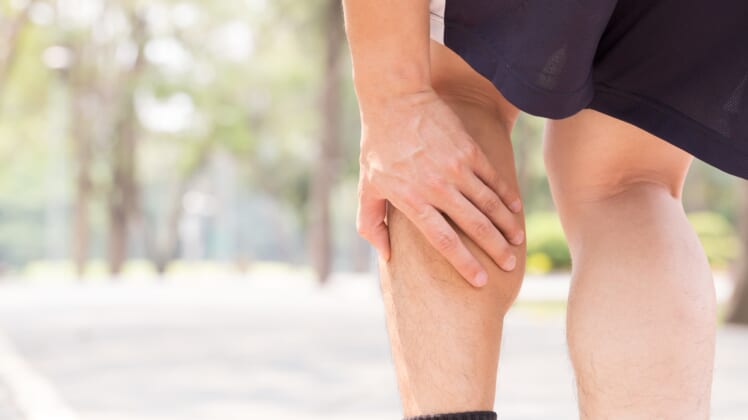
Your circulation is one of the most important systems your body has. And it performs amazingly, carrying blood for organs to function and absorbing nutrients your body needs.
When that system stops, as in the case of a blood clot, it turns into a dangerous situation. One of these dangerous blood clots is called deep vein thrombosis (or DVT).
How to know if you have Deep Vein Thrombosis (DVT)?
Blood clots happen in your body all the time, especially when you receive an open wound. It’s a natural response that saves you a trip to the hospital for every little nick and cut.
Blood clots are first triggered when platelets inside your body rush to the wound site to stop bleeding. The blood then responds and forms a clump around it to help.
These natural, “good” clots usually go away on their own, but that’s not the case with deep vein thrombosis.
Unlike the others, DVT happens in the major veins of the body. According to the Mayo Clinic, it usually occurs in a large vein in the legs.
The clot can then grow unnecessarily and stop a large amount of blood circulation. At this point, the body may have a hard time dissolving the blood clot with its normal processes, leading to complications.
DVTs are fairly common too. As many as 900,000 people suffer from these dangerous clots every year, estimates the Centers for Disease Control and Prevention.
To prevent DVTs and their harmful consequences, more Americans need to know the symptoms and how to respond. The Mayo Clinic points out these recognizable signs of deep vein thrombosis:
- Pain, especially in the calf or lower leg
- Warmth around the affected area
- Red or discolored skin
While DVTs can happen to anyone, you may want to watch more carefully if you have: a blood-clotting disorder, limited mobility, heart problems, obesity, or pregnancy.
Also, the American Academy for Orthopaedic Surgeons mentions that some of the most common risks for DVT involve leg injuries or leg or hip surgery.
What Are the Germiest Public Places?
Deep vein thrombosis is dangerous.
You can understand why deep vein thrombosis is dangerous for blood circulation. But it also comes with other life-threatening complications.
According to the AAOS, two major complications include post-thrombotic syndrome and pulmonary embolism.
Post-thrombotic syndrome
Sometimes, patients who have experienced DVT will have long-lasting symptoms. They may suffer from swelling, leg pain other symptoms that can simply be annoying or even life-changing.
The AAOS explains that these symptoms are due to damage caused to the veins during the DVT.
Since the damage may even cause blood pooling in the legs, this factor may increase a person’s risk for developing another blood clot in the future.
Pulmonary embolism
By far, this complication is the most worrisome of all. When a DVT occurs, the blood clot can break apart, causing part of it to travel freely.
If not dealt with immediately, the clot could reach the lungs and block blood flow. This situation needs emergency medical treatment.
The following signs are common for pulmonary embolism:
- Chest pain
- Dizziness
- Shortness of breath or difficulty breathing
- Coughing, especially if producing blood
Getting Treatment for Deep Vein Thrombosis
Again, getting immediate treatment for DVT is crucial. Once a doctor identifies the blood clot, dissolving it will be first priority.
The Mayo Clinic gives several options. However, your doctor will judge which direction to take depending on the size of the blood clot.
First, you may simply need an anticoagulant, or blood thinner. This type of medication will thin the blood to prevent the clot from getting worse.
Then, your body should be able to dissolve the clot on its own. If the clot is more threatening, your doctor may give you medication to help your body break up the clot.
Last, if these options appear too risky on their own, your doctor may recommend inserting a filter into a large vein. This filter will help catch most clots before they reach the lungs.
Of course, the best option for anyone to take is to prevent DVT from happening altogether. This can be as simple as getting the blood moving through exercise and regular breaks from sitting.
Drinking enough water can also help to keep the blood thinned out in the body. If you’re at high risk for a DVT, you could also consider wearing compression stockings to help the blood pump more strongly through the legs.
Deep vein thrombosis is a dangerous condition. Not only can the blood clot reduce the flow of blood through the body, but it can also lead to life-threatening complications. People need to stay aware of this possibility—that way they can act quickly if one occurs.

